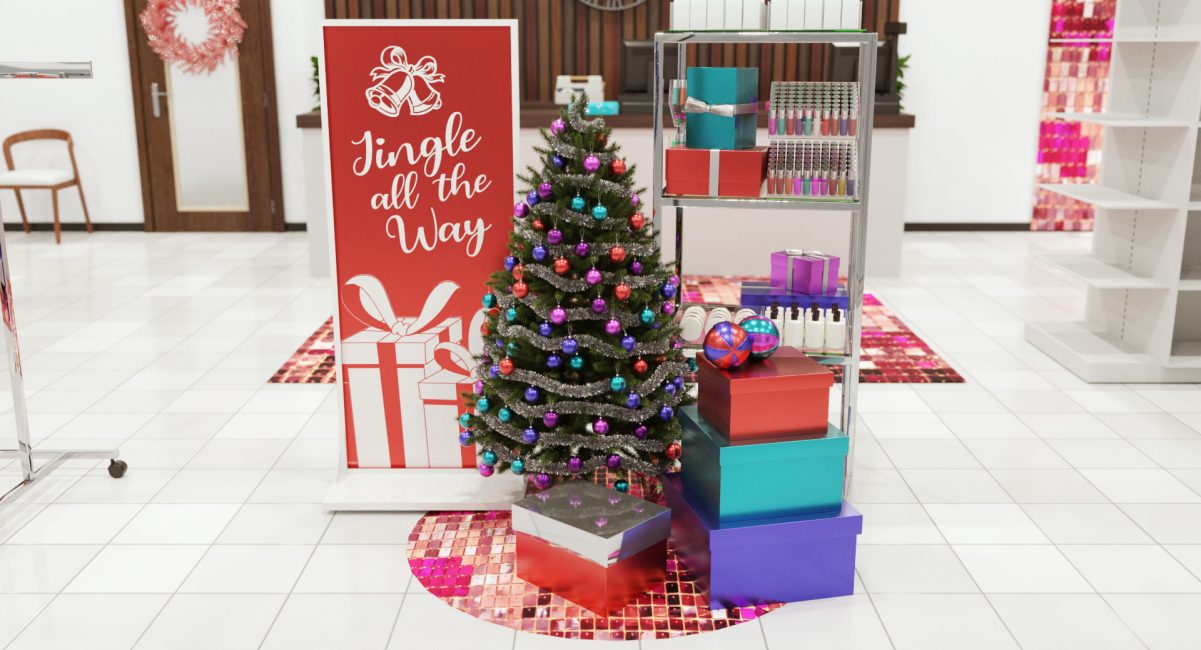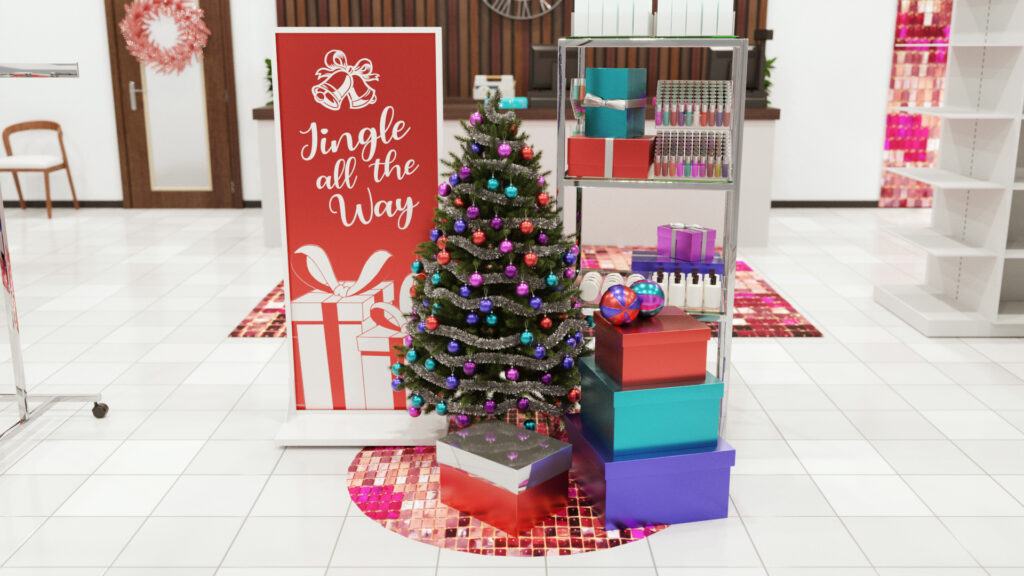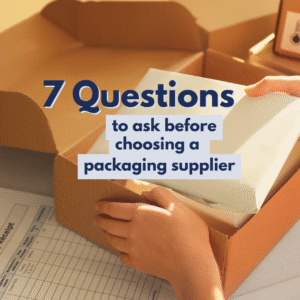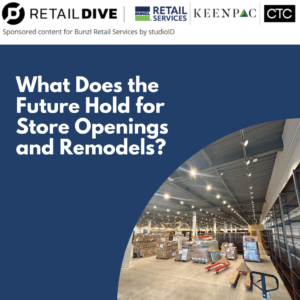We can all probably think of a retailer that can always be counted on for impressive visual moments and unique merchandising displays.
A front-of-department focal point table, filled with expertly merchandised product and a strong color story can’t help but pull you in to explore more. These intentional designs are important to not only sell product but to tell your brand story and what product you are standing behind at that moment.
Why Retail Visual Merchandising is Important
With the continuation of huge eCommerce traffic and the aftereffects of the pandemic, retailers must seize the opportunity and create an experiential in-store environment, to bring customers in, keep them there, and leave them wanting more. Visual merchandising is key and at the heart of shaping that experience and uniqueness.
Great visual merchandising has been proven to increase foot traffic and sales, promote new items and encourage new item uses.
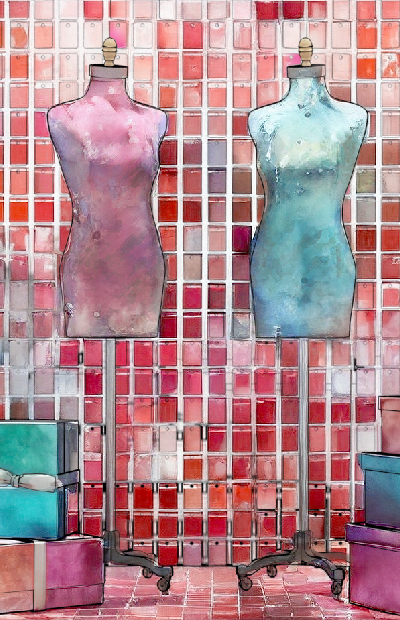
Draw Shoppers in and Keep Them Longer
Commanding visual merchandising has the power to stop passersby in their tracks, and it all starts with the display windows that typically flank interior and exterior store entrances. According to NPD Research, window displays influence purchases 24% of the time.
A thoughtful and strategically mapped-out store floor plan and appealing displays can encourage customers to spend more time exploring your store. The longer customers stay, the greater the likelihood of making a purchase. A study published in the Journal of Business Research found that increased dwell time in-store is positively correlated with higher sales.
Create an Emotional Connection to a Brand
Visual merchandising is a key component in how consumers view your brand.
Seasonal and monthly visual moments and displays, along with signage, and promotional events all lend themselves to add uniqueness and a point of view of a retailer’s brand and show how they are choosing to “go to market.” The more personality and point of view a retailer shows and stands behind, the more shoppers can feel connected to it.
Standout from the Competition
Embrace and share what makes your retail brand unique. Leveraging strong product buys, capsule collections, creative displays, and storytelling elements, retailers can captivate customers and create memorable moments that go beyond the transactional. This emotional connection fosters brand loyalty, encourages repeat visits, and sets retailers apart in a crowded marketplace.
8 Ways to Drive Traffic Through Visual Merchandising
1. Tell A Story
The more authentic your brand feels, the more your customers will relate to and appreciate it. Use this opportunity to really tell your story and show your values. Think about what makes your brand special and why your customers choose to shop there.
Be consistent in how you portray the brand in all facets of the in-store experience. Invoke emotion and share your perspective throughout your retail environment. Customers should have no question about what product you stand for and the lifestyle you envision for those who shop with you.
2. Eye-Catching Window Displays
Window displays welcome shoppers and provides a taste of what they’ll discover inside. Create captivating and unexpected displays that immediately pique curiosity and compel passersby to come inside and explore more.
A strong theme is essential for standout window displays. These themes also work to strengthen ties across channels, with consistent messaging, visuals, and color stories.
3. Become a Tradition
Retailers who can create an experience that shoppers look forward to seasonally or annually as a part of their personal tradition is the ultimate goal. Savvy retailers don’t just install a holiday display that’s nice to look at and checks the box, but design and develop a fully interactive immersive space.
Whether it’s a visiting holiday guest, games, craft tables or other creative activities, all of which give customers a reason to visit and revisit your store and along with a memory to take home.
These memorable experiences will deepen customer connection, drive brand loyalty and increase repeat visits. This is also a great time to share your brand values; showcase philanthropic partnerships, charitable efforts, and sustainability goals to encourage a positive brand perception.
4. Encourage Interaction and Engagement
Give shoppers more to do in-store with meaningful interaction and engagement. From digital integrations, QR codes, and augmented reality, there are so many ways to take the in-store experience to the next level. Merchandising can also link with your social media efforts and tie into your website for a seamless multichannel experience.
5. Create Shareable Moments
In today’s digital age, social media plays a significant role in driving traffic to physical stores. Create visually appealing displays with purpose that are “Instagrammable” and share-worthy.
Customers want to capture and share their experiences with their online communities. Think of these in-store moments almost as an art installation that also may feature a product.
6. Engage Multiple Senses
Visual merchandising goes beyond just styling and displays. Engaging multiple senses can create a more immersive and memorable experience for your shoppers. Consider incorporating ambient music, distinct scents, and tactile elements that align with your brand and products.
As Darren Coleman of Wavelength Marketing said in Forbes, “The true magic happens when you build brand experiences that orchestrate multi-sensory cues that appeal to a number of senses. The results will be compelling retail experiences which deliver differential value that will be hard for your competitors to emulate, and most especially the digital ones.”
7. Intentional Signage
Signage is an important aspect of the visual language within a store. With thoughtful placement and integration throughout the space, signage can help encourage shoppers to discover new items, visit specific areas of the store or can simply add a seasonal touch.
Developing a messaging strategy or hierarchy and matching each message type to a defined zone within the store is a great first step. For example, you may want to keep the highest-level signage, at ceiling level for just wayfinding and institutional signage.
This clean and uncluttered approach will help shoppers to easily navigate through your space. More detailed messaging such as feature and benefit callouts work best right at product level where buying decisions are made.
8. Create a Comprehensive Plan
Create special moments at every corner from the cashwrap to the dressing. Make sure you have thoughtful seasonal touch points throughout your customers’ journey from arrival to purchase.
Customer Touchpoints
✓ Parking Lot
✓ Windows & Façade
✓ Entrances & Vestibules
✓ Focal Areas
✓ In-Department & Backwalls
✓ Fitting Rooms
✓ Lounges & Experience Zones
✓ POS & Checkout
✓ Customer Service
✓ In-Store Pickup Stations
Holiday Elements
✓ Branded packaging
✓ Decorative Boxes
✓ Focal displays
✓ Forms & form covers
✓ Frames & signage
✓ Gift boxes & bows
✓ Greenery & garlands
✓ Hanging decor & curtains
✓ Light strands & lighting
✓ Merchandising tools
✓ Ornaments
✓ Reusable bags
✓ Seasonal décor
✓ Seasonal rugs
✓ Tablecloths & runners
✓ Sprays
✓ Wreaths
✓ Window props & displays
✓ Winter botanicals
Need help taking your holiday visual merchandising to the next level? Contact [email protected]
